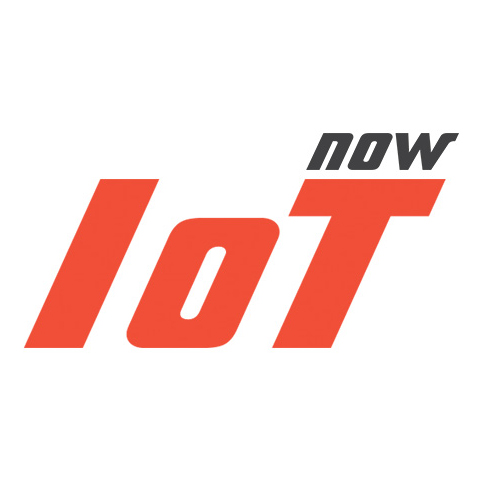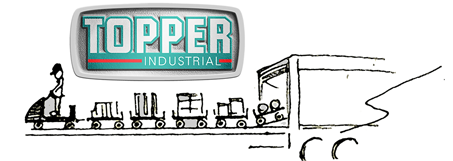
Original Article HERE.
Driving safety
Manufacturing plants operating under Industry 4.0, IIoT, and FTF principles presents an opportunity for dramatic safety improvements if handled correctly.
Reconfiguration of production areas at short notice, involving the rapid changes of tooling and even the physical movement of equipment, can pose a range of safety challenges. Each new production configuration entails a separate risk and safety assessment. A range of devices can be fitted onto equipment capable of detecting and reporting operator behaviour which may pose a risk to safety.
This equipment can take a number of forms; among the most common are intelligent cameras which gather digital images or footage and pass these to a central control point, automatically highlighting any abnormal behaviours such as entry into a restricted area, Ed Brown and Ryan Brown say. (Also read part 1)
Many systems designers also opt to equip their machines with safety sensing devices which can immediately sense if a human operator has moved into an unsafe area or positioned themselves too close to a particular piece of plant.
The default response is usually to power down the machine or, in the case of a collaborative robot, to slow down to a safe speed, allowing the individual time to move away from the hazard. In the case of carts, these calculations are embedded in the design to ensure a runaway cart cannot happen.
With the single largest cause of injury on a manufacturing plant floor being a fork truck, reducing or eliminating this machinery may prove the most efficacious solution to safety improvement metrics. Bringing human performance and safety into the mix can extend situational awareness beyond the knowledge of assets and equipment and a person’s geo-location and skillset. Industry 4.0 combined with FTF enables operational decision-makers to executive optimal safety behaviours.
While fork trucks have been the machinery causing the most harm on a manufacturing plant floor, new IIoT metrics now overlay physiological and biomechanical data with workplace data (hours worked, tasks conducted, welfare records, etc.) and run advanced analytics incorporating machine learning, and allow floor supervisors to recognise when floor workers are reaching a point of physical or mental harm.
Automated material handling proves best integration of industry 4.0, IIoT and FTF
Automated material handling in the FTF environment creates a more efficient material workflow that exceeds expectations with minimal overhead. Self-driving vehicles tug a string of connected carts increasing throughput by automating pick up, drop off, and transport, executing put-away, cross-docking, replenishment, and all other point-to-point deliveries.
The industrial carts and tuggers are infrastructure free, adaptable, and scalable to operational, seasonal, and production shifts and re-tooling. Safety is not compromised because vehicles and carts are safely navigated around obstacles and alongside workers.
FTF is particularly useful as a total fulfillment solution combining the strengths of humans and robots with real-time IIoT intelligence. By automating piece picking, cart picking, and case picking operations industrial strength Topper carts deliver totes, cases, and pallets autonomously.
Fork Truck Free and IIoT exceeds throughput goals
Guided vehicles can be easily programmed by manufacturing plant floor staff to perform exactly as trained each and every time, running a 24/7 three shift operation. Topper Industrial has a string of carts behind AGVs (automated guided vehicles) eliminating costly downtime and increasing throughput productivity. All part of the FTF (Fork Truck Free) initiatives and integration with IIoT methodologies, both AGV and cart consistency is critical to meeting and exceeding throughput goals.
IIoT and FTF are about smart machines and smarter materials handling. Industry providers are investing in sensor-equipped technologies that capture data and allow them to monitor material flow in real-time. Since most automated guided vehicles are now connected to the Internet, data-rich sensors collecting predictive data, self-driving vehicles are an extension of Industry 4.0, IIoT, FTF, and lean initiatives.
IIoT, FTF and material flows
Individually customised or mass-produced custom products require more items to be managed as well as leaner material flows. These factors exponentially increase the complexity of logistics. Nearly half of manufacturing disruptions are due to problems with materials – wrong or defective part, missing parts, or unavailability of parts during production.
State-of-the-art factories are preparing for the increase in logistic complexity, which is evident as there is a boom in warehouse automation and warehouse management systems (WMS).
These companies know that the old methods will not apply in the new environment and mother/daughter carts are better equipped to handle frequent deliveries and in smaller quantities.
More precision and efficiency in receiving, drives the impact of material flow efficiency from suppliers; this improves using ASN messages (advanced ship notices). Whether at a plant or manufacturing cell, line works must know what item is arriving and the corresponding shipping units.
Moving materials to manufacturing requires flexibility, efficiency, and speed. The increased number of SKUs makes the traditional ‘installer picks’ approach impossible or at least inefficient. Assembly is moving toward 100% picking. Supermarket picking may be one step on the way, but the increased use of warehouse automation and number of SKUs is pushing toward warehouse to manufacturing picking. Picking for manufacturing has clear advantages in speed, quality, and efficiency.
All predictions and analyses expect a rapid transition toward the IIoT vision. 25% of the manufacturing industry believes that over 30% cost savings will be realised.
Intralogistics 4.0 and fork truck free combined a real paradigm shift with work force shortage
Workforce scarcity further accelerates the trend driving the transition to Intralogistics 4.0 and FTF. According to the U.S. Census Bureau, 60 million “Baby Boomers” will exit the workforce by 2025, while only 40 million new workers will enter the job market. The cost of finding, training, and retaining increasingly scarce labor is about to reach a tipping point.

With labor being a substantial portion of operating budgets, escalating labor costs have a significant impact on margins. Skill gaps in the workforce include problem-solving abilities, situational response expertise, abstract reasoning, and even basic work ethics. And there is no indication these trends will be reversed.
This paradigm shift in intralogistics, automation, integrating, managing, and optimising the logistical flow of material goods with the flow of information within the walls of a fulfillment centre, distribution centre (DC), or warehouse represent the tremendous opportunity for businesses to tap potentials.
Improving efficiency, transparency, and productivity in the supply chain is possible by intelligently networking elements in the logistics system, logging massive amounts of data, learning from conditional results, and adapting system behaviours.
By 2025, the intralogistics industry must be capable of supporting a highly diverse set of order and distribution channels in keeping with mass customised products and delivery methods. Customers expect deliveries of customised product anywhere at any time, placing fierce demands on DCs for faster throughput. Industry 4.0 data driven approach when combined with FTF will play an integral role.
The authors of the blog are Ed Brown and Ryan Brown

Author profiles
The engineering foundation of migrating from a fork truck material flow to Fork Truck Free operational efficiencies are represented by Topper Industrial founder Ed Brown and son Ryan Brown, president of the Wisconsin-based industrial cart FTF revolution.
Ed Brown is considered the father of the North American fork truck free (FTF) movement. In 1994, Brown opened the operations of Topper Industrial, a leading manufacturer of various material handling equipment in Sturtevant, Wisconsin.
The company proves highly innovative in finding solutions to the needs of an ever-changing industrial work environment. Brown is an inventor of many industrial cart and conveyors solutions. He holds several patents through his years running Topper.
Most of the patents relate to ergonomics and safety primarily in the material handling sector. These patented products are extensive and include mechanical advancements on Topper’s tow bar, couple system and cart handle. Brown also holds a patent on tilt carts, and many other Topper products are patent pending.

